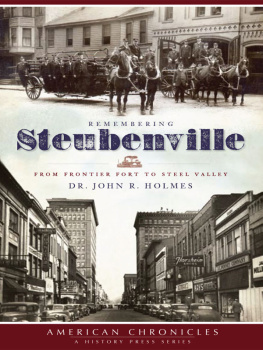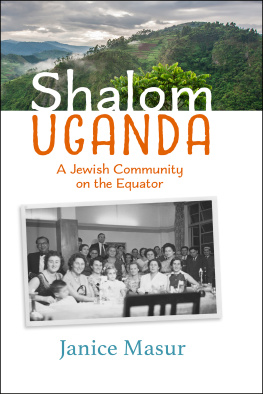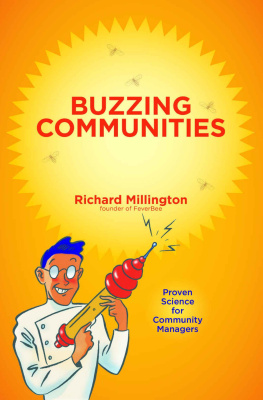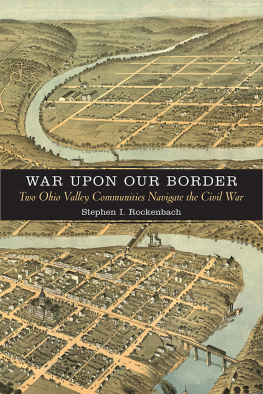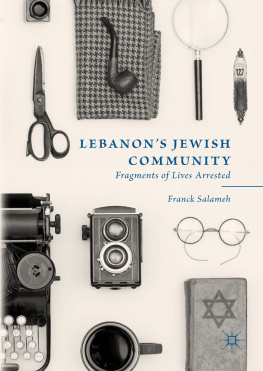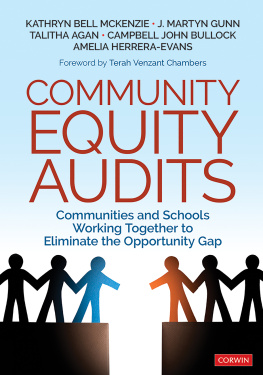Jewish Communities on the Ohio River
Ohio River Valley Series
Rita Kohn, Series Editor
Jewish Communities
on the Ohio River
A HISTORY
Amy Hill Shevitz

Publication of this volume was made possible in part by a grant from the National Endowment for the Humanities.
Copyright 2007 by The University Press of Kentucky
Scholarly publisher for the Commonwealth,
serving Bellarmine University, Berea College, Centre
College of Kentucky, Eastern Kentucky University,
The Filson Historical Society, Georgetown College,
Kentucky Historical Society, Kentucky State University,
Morehead State University, Murray State University,
Northern Kentucky University, Transylvania University,
University of Kentucky, University of Louisville,
and Western Kentucky University.
All rights reserved.
Editorial and Sales Offices: The University Press of Kentucky
663 South Limestone Street, Lexington, Kentucky 40508-4008
www.kentuckypress.com
11 10 09 08 07 5 4 3 2 1
Library of Congress Cataloging-in-Publication Data
Shevitz, Amy Hill, 1953
Jewish communities on the Ohio River : a history / Amy Hill Shevitz.
p. cm.
Includes bibliographical references and index.
ISBN 978-0-8131-2430-8 (hardcover : alk. paper)
1. JewsOhio River RegionHistory. 2. JewsOhio River RegionPolitics and government. 3. JewsOhio River RegionSocial life and customs. I. Title.
F520.6.J5S54 2007
977.004924dc22
2007014320
This book is printed on acid-free recycled paper meeting
the requirements of the American National Standard
for Permanence in Paper for Printed Library Materials.

Manufactured in the United States of America.

| Member of the Association of American University Presses |
Contents
Series Foreword
The Ohio River Valley Series, conceived and published by the University Press of Kentucky, is an ongoing series of books that examine and illuminate the Ohio River and its tributaries, the lands drained by these streams, and the peoples who made this fertile and desirable area their place of residence, of refuge, of commerce and industry, of cultural development, and, ultimately, of engagement with American democracy. In doing this, the series builds upon an earlier project, Always a River: The Ohio River and the American Experience, a multifaceted project sponsored by the National Endowment for the Humanities and the humanities councils of Illinois, Indiana, Kentucky, Ohio, Pennsylvania, and West Virginia, with a mix of private and public organizations.
Each books story is told through the men and women acting within their particular time and place. Each directs attention to the place of the Ohio River in the context of the larger American story and reveals the rich resources for the history of the Ohio River and of the nation afforded by records, papers, artifacts, works of art, and oral stories preserved by families and institutions. Each traces the impact the river and the land have had on individuals and cultures and, conversely, the changes these individuals and cultures have wrought on the valley with the passage of years.
Jewish Communities on the Ohio River: A History is a vibrant mosaic of twenty-four communities embedded along the length of the Ohio River. Despite imprecision in the term small town, Amy Hill Shevitz draws us into her sense of small and ultimately helps us envision the bits and pieces as an image of how and why the Ohio River Valley and the concomitant flux and flow of Jewish in-migration, settlement, and out-migration have affected each other and the larger American and Jewish stories over three centuries. Shevitz rightfully avers that the study of small-town Jewry is critical to understanding the American Jewish experience to the fullest. In so doing, we gain a fuller understanding of the Ohio River Valley. Shevitz provides both a horizontal and vertical depiction. Her style makes this book intriguing to the general public while contributing substantially to regional scholarship.
As a durable companion to Darrel E. Bighams Towns and Villages of the Lower Ohio (University Press of Kentucky, 1998), Jewish Communities on the Ohio River, too, is a benchmark work based on thorough, impeccable research. Shevitz integrates newer interpretations within older assumptions, thus showing how historians grow within their contexts. She probes questions important to deciphering how a religious and cultural group factors into the importance of small towns as an American phenomenon.
Throughout the pages of Jewish Communities on the Ohio River, we hear the voices of people who stir our imagination. We experience their lives up to the present, with descendents arranging their Ohio River Valley memories into a mythic old country framed by closeness, warmth, supportiveness, and the transplantation of old friendship networks into new settings.
Rita Kohn
Series Editor
Preface
In the spring of 1977, I went with some acquaintances to visit an old Jewish cemetery tucked away on a hill beyond a side road in Marietta, Ohio, the town where I grew up and to which they had moved from Pittsburgh a few years earlier. There were only six gravestones, and the names on them ranged from the familiarsome family members in their eighties still lived in townto the irretrievable, with stones so worn that we could not make out the Hebrew inscriptions. I took some of the names and dates to the local public library to see if I could find something about them from obituaries published in the local newspaper. There they were. From 1907: Morris Miller, the aged Jew, who died when his junk-peddling wagon was hit by a train at a crossing just around the corner from my parents home. From 1934: Harold Ginsburg, killed in an oil well explosion only three weeks after his wedding.
These obituaries suggested the existence of a community now dissolved, its people dispersed. I was eventually able to re-create much of this communitys history and life, and the resulting article was published in 1979. Much later, when I was back in graduate school studying American history, my original story of a small river towns Jewish past was still piquing interest, and I was asked to expand my local project to a regional one. Thus Jewish Communities on the Ohio River became my doctoral dissertation and, now, a book for the University Press of Kentuckys Ohio River Valley Series.
Without a specific external motivation, I might not have chosen to undertake this particular study. But the start of the project coincided with my move from the East Coast to the West, and the questions I needed to address turned out to be extremely relevant to my immediate experience: How do Jews and Jewish communities differ in different parts of the country? Can we ascertain why? In addition to studying the Ohio River Valley, I turned my scholarly attention to the Jews of Oklahoma (the first phase of my cross-country journey) and then to the Jews of Southern California. My intellectual journeys have been enhanced and invigorated by my physical journeys.
My research was supported in part by several sources: a Graduate Student Senate Research Grant and a Graduate College Student Research Presentation Award from the University of Oklahoma, the Loewenstein-Wiener Fellowship in American Jewish Studies from the American Jewish Archives at Hebrew Union College in Cincinnati, and the Finkelstein Fellowship in Jewish Studies at the University of Judaism in Los Angeles.
Next page

